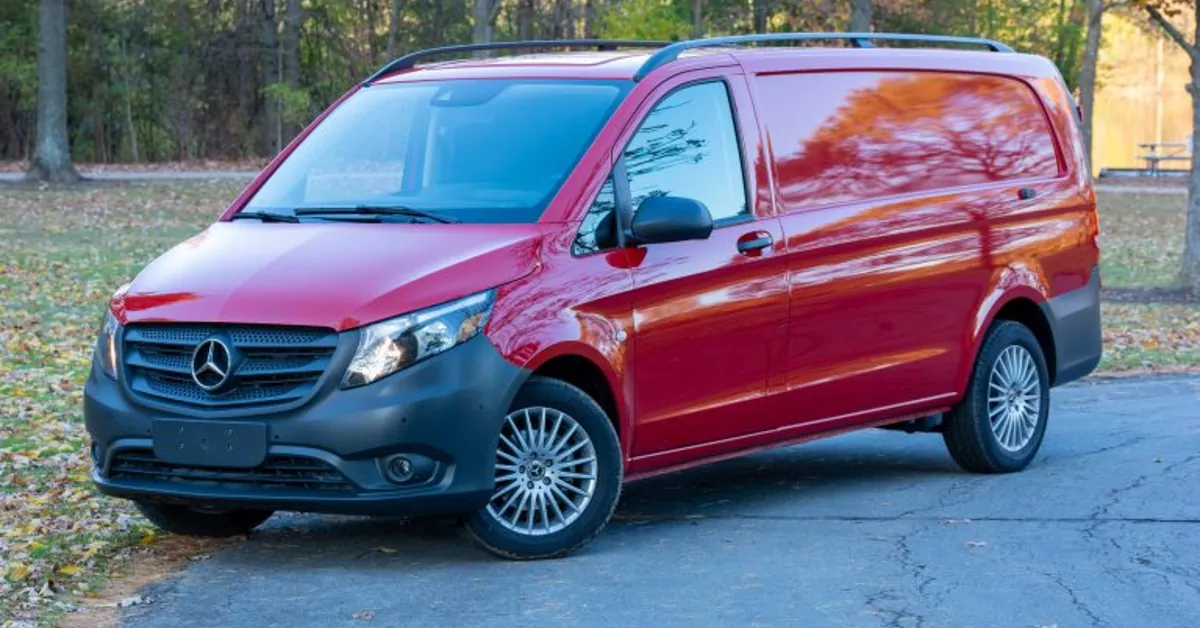Choosing the right work van can make or break your business operations. In the commercial vehicle world, reliability isn’t just about convenience it’s about profitability, customer satisfaction, and maintaining your professional reputation.
When your van breaks down on a job site, you’re not just dealing with repair costs; you’re facing lost revenue, disappointed clients, and potential damage to your business relationships that can take years to rebuild.
The commercial van market has evolved dramatically in recent years, with manufacturers introducing new technologies, updated powertrains, and enhanced safety features. However, not all innovations translate to improved reliability.
Some models have established themselves as workhorses that can handle the demanding daily grind of commercial use, while others have gained notorious reputations for leaving contractors stranded at the worst possible moments.
Volkswagen Commercial Vehicles lead the reliability index this year with the Transporter, which sat in second place last year, overtaking the Mercedes-Benz Sprinter and ending its nine-year stronghold at the top, according to recent fleet reliability studies.
This shift demonstrates how quickly the landscape can change and why staying informed about current reliability trends is crucial for any business owner.
The cost of unreliability extends far beyond the initial repair bill. An unreliable van costs you money in more ways than one. Breakdowns lead to expensive repairs and wasted hours. You might also face towing fees and missed business opportunities.
When you factor in the domino effect of missed appointments, emergency rental costs, and the time spent coordinating repairs, an unreliable van can become a significant drain on your bottom line.
This comprehensive guide examines ten work vans that represent the extremes of the reliability spectrum. We’ll explore five models that have earned stellar reputations for dependability and five that consistently disappoint their owners with frequent breakdowns and costly repairs.
Each vehicle analysis includes real-world performance data, common issues, maintenance requirements, and total cost of ownership considerations to help you make an informed decision for your business needs.
5 High-Reliability Work Vans
These exceptionally dependable commercial vehicles feature robust drivetrains and precision-manufactured components that maintain optimal performance through years of demanding daily use and heavy payload operations.
Their thoughtful engineering includes reinforced suspension systems and durable transmission designs that resist the stress concentrations typically created by constant loading, unloading cycles, and the punishing stop-and-go driving patterns common in commercial applications.
From electrical systems that power multiple work tools simultaneously to cooling systems that handle extended idling periods, these remarkable work vans continue operating like new without developing performance degradation or costly mechanical failures.
Contractors report decades of trouble-free service with these dependable workhorses an often-overlooked quality feature that proves its worth through consistent job site reliability and maintained productivity throughout ownership.
These vehicles showcase meticulous attention to commercial-grade durability testing and component selection, resulting in systems that naturally withstand the harsh realities of professional use without requiring frequent maintenance interventions.
The manufacturers invested heavily in real-world testing with actual contractors to create robust engines, transmissions, and electrical systems that function reliably under demanding work conditions.
Their service records reveal satisfied business owners who experience minimal unexpected downtime, reduced operating costs, and enhanced profitability through consistent vehicle availability when jobs need completion.
1. Volkswagen Transporter (T6.1)
The Volkswagen Transporter has claimed the top spot in reliability rankings for 2024, marking a significant achievement for the German manufacturer. This van represents the evolution of decades of engineering refinement, building upon the solid foundation established by previous generations while incorporating modern technology and improved build quality.
The T6.1 generation, in particular, has addressed many of the minor issues that plagued earlier models, resulting in a work van that consistently delivers exceptional reliability across diverse commercial applications.
The Transporter’s reputation for reliability stems from its robust construction and time-tested engineering principles. Volkswagen has maintained a conservative approach to technological integration, ensuring that new features undergo extensive testing before implementation.
This philosophy has paid dividends in real-world applications, where the van consistently outperforms competitors in terms of uptime and mechanical dependability. Fleet managers consistently report that Transporters require fewer emergency repairs and experience significantly less downtime compared to other vehicles in their fleets.
Under the hood, the Transporter offers a range of proven powertrains that balance performance with reliability. The 2.0-liter TDI diesel engines have been refined over multiple generations, with the latest iterations featuring improved fuel injection systems and enhanced emissions controls that don’t compromise durability.
These engines are known for their longevity, with many examples easily surpassing 200,000 miles with proper maintenance. The transmission options, including both manual and automatic variants, have been engineered to withstand the stop-and-go nature of commercial use while maintaining smooth operation throughout their service life.
The build quality of the Transporter is immediately apparent in its solid construction and attention to detail. The body panels are made from high-quality steel with excellent corrosion resistance, while the interior components are designed to withstand the rigors of daily commercial use.
The electrical system, often a source of problems in commercial vehicles, has been engineered with redundancy and durability in mind. Wiring harnesses are well-protected and routed away from potential damage points, while connectors are sealed against moisture and contaminants.

One of the key factors contributing to the Transporter’s reliability is its comprehensive dealer network and parts availability. Volkswagen Commercial Vehicles has invested heavily in ensuring that service centers are equipped with the necessary tools and training to maintain these vehicles properly.
Parts are readily available, and the modular design of many components allows for efficient repairs when issues do arise. This infrastructure support significantly reduces downtime and keeps operating costs predictable.
The Transporter’s cargo area is designed with practicality and durability in mind. The load floor is constructed from robust materials that can withstand heavy equipment and tools without damage.
The side panels feature integrated tie-down points and optional shelving systems that are engineered to maintain their integrity under load. The rear doors are particularly well-designed, with heavy-duty hinges and sealing systems that prevent rattles and leaks even after years of use.
From a maintenance perspective, the Transporter follows a reasonable service schedule that balances protection with cost-effectiveness. The diesel engines feature extended service intervals, reducing the frequency of routine maintenance while maintaining reliability.
When service is required, the van’s design allows for easy access to key components, reducing labor costs and minimizing the time spent in the shop. The diagnostic systems are sophisticated yet user-friendly, allowing technicians to quickly identify and address any issues that may arise.
The total cost of ownership for the Transporter is consistently lower than many competitors due to its reliability and strong resale value. While the initial purchase price may be higher than some alternatives, the reduced frequency of repairs and lower maintenance costs quickly offset this difference.
Insurance costs are typically reasonable due to the van’s excellent safety record and lower theft rates compared to some other commercial vehicles. Fleet operators consistently report high satisfaction rates with the Transporter, citing its dependability as a key factor in their purchasing decisions.
The van’s ability to maintain consistent performance over extended periods makes it an ideal choice for businesses that cannot afford unexpected downtime. Whether used for deliveries, service calls, or as a mobile workshop, the Transporter has proven itself capable of handling diverse commercial applications with minimal issues.
2. Mercedes-Benz Sprinter
The Mercedes-Benz Sprinter has long been synonymous with commercial van excellence, and despite being recently overtaken in some reliability rankings, it remains one of the most dependable work vans available.
The Sprinter’s reputation has been built over decades of continuous improvement and refinement, with each generation incorporating lessons learned from real-world commercial applications.
The current generation represents the culmination of Mercedes-Benz’s extensive experience in commercial vehicle manufacturing, offering a combination of reliability, versatility, and performance that few competitors can match.
The engineering philosophy behind the Sprinter emphasizes durability and longevity above all else. Mercedes-Benz has designed this van to withstand the punishment of daily commercial use, with components selected and tested specifically for their ability to maintain performance under stress.
The chassis is constructed from high-strength steel with reinforced mounting points for the suspension, engine, and transmission. This robust foundation provides the stability and durability necessary for heavy-duty applications while maintaining the refinement expected from a Mercedes-Benz product.
The Sprinter’s engine lineup consists of thoroughly tested and proven powertrains that have been refined through multiple generations. The turbocharged diesel engines offer excellent fuel economy while providing the torque characteristics necessary for commercial applications.
These engines feature advanced fuel injection systems and sophisticated emissions controls that have been designed to maintain performance and reliability throughout their service life.
The transmission options, including both manual and automatic variants, are engineered to handle the diverse driving conditions encountered in commercial use, from city stop-and-go traffic to highway cruising.
Build quality is where the Sprinter truly excels, with attention to detail that sets it apart from many competitors. The body panels are precision-manufactured with excellent fit and finish, while the interior components are designed to withstand years of heavy use.
The electrical system is particularly noteworthy, featuring high-quality components and sophisticated wiring harnesses that are protected against moisture, vibration, and temperature extremes. The dashboard and control systems are intuitive and reliable, with switches and controls that maintain their functionality even after extensive use.

The Sprinter’s modular design philosophy contributes significantly to its reliability and serviceability. Major components are designed to be easily accessible for maintenance and repair, reducing labor costs and minimizing downtime.
The diagnostic systems are comprehensive and user-friendly, allowing technicians to quickly identify and address any issues that may arise. Parts availability is excellent, with Mercedes-Benz maintaining an extensive network of dealers and service centers equipped to handle Sprinter maintenance and repairs.
One of the Sprinter’s greatest strengths is its versatility, which contributes to its reliability by allowing operators to configure the van specifically for their intended use. Whether equipped as a cargo van, passenger transport, or specialized work vehicle, the Sprinter’s adaptability means that it can be optimized for specific applications, reducing stress on components and improving overall reliability.
The extensive range of factory and aftermarket accessories allows for customization without compromising the van’s structural integrity or warranty coverage. The Sprinter’s safety systems are comprehensive and reliable, featuring advanced driver assistance technologies that help prevent accidents and reduce insurance costs.
The electronic stability control system is particularly effective in commercial applications, helping to maintain control when carrying heavy loads or navigating challenging driving conditions. The braking system is robust and well-balanced, providing consistent stopping power even when fully loaded.
From a maintenance perspective, the Sprinter follows a comprehensive service schedule that is designed to maximize reliability while minimizing costs.
The service intervals are reasonable, and the van’s design allows for efficient maintenance procedures. The diagnostic capabilities are sophisticated, allowing for predictive maintenance strategies that can identify potential issues before they become problems. This proactive approach to maintenance helps ensure consistent reliability throughout the van’s service life.
The total cost of ownership for the Sprinter is competitive despite its premium initial price point. The van’s reliability reduces unexpected repair costs, while its strong resale value helps offset the higher purchase price.
Insurance costs are typically reasonable due to the van’s excellent safety record and comprehensive security features. Fuel economy is competitive for its class, helping to control operating costs over the van’s lifetime.
Fleet operators consistently report high satisfaction with the Sprinter’s reliability and performance. The van’s ability to maintain consistent operation over extended periods makes it an ideal choice for businesses that require dependable transportation.
Whether used for last-mile delivery, service operations, or passenger transport, the Sprinter has proven itself capable of handling diverse commercial applications with minimal issues and maximum uptime.
3. Ford Transit (2020 and Later)
The Ford Transit has undergone significant improvements in recent years, with the 2020 model year marking a turning point in the van’s reliability story. Ford invested heavily in addressing the issues that plagued earlier generations, resulting in a work van that now competes effectively with the best in its class.
The current Transit represents a mature platform that has benefited from extensive real-world testing and continuous refinement, making it a compelling choice for businesses seeking a reliable and capable commercial vehicle.
The foundation of the Transit’s improved reliability lies in its redesigned powertrain options. Ford has refined the engine lineup to focus on proven technologies that deliver consistent performance and longevity.
The turbocharged EcoBlue diesel engines have been significantly improved from their earlier incarnations, featuring enhanced fuel injection systems, improved turbocharging, and better emissions controls. These engines provide excellent torque characteristics for commercial applications while maintaining fuel efficiency and reliability throughout their service life.
The Transit’s chassis and suspension system have been engineered to handle the demands of commercial use while providing a comfortable driving experience.
The front suspension utilizes a robust MacPherson strut design with reinforced mounting points, while the rear suspension features a sophisticated multi-link setup that provides excellent load-carrying capacity and stability.
The chassis itself is constructed from high-strength steel with strategic reinforcement areas that protect critical components from damage during heavy use. Build quality improvements in the current Transit are immediately apparent in both the exterior and interior construction.
The body panels are manufactured to tighter tolerances with improved corrosion resistance, while the interior components are designed to withstand the rigors of daily commercial use.
The electrical system has been completely redesigned with improved wiring harnesses, better connectors, and enhanced protection against moisture and contamination. The dashboard and control systems are user-friendly and reliable, with switches and controls that maintain their functionality over extended periods.
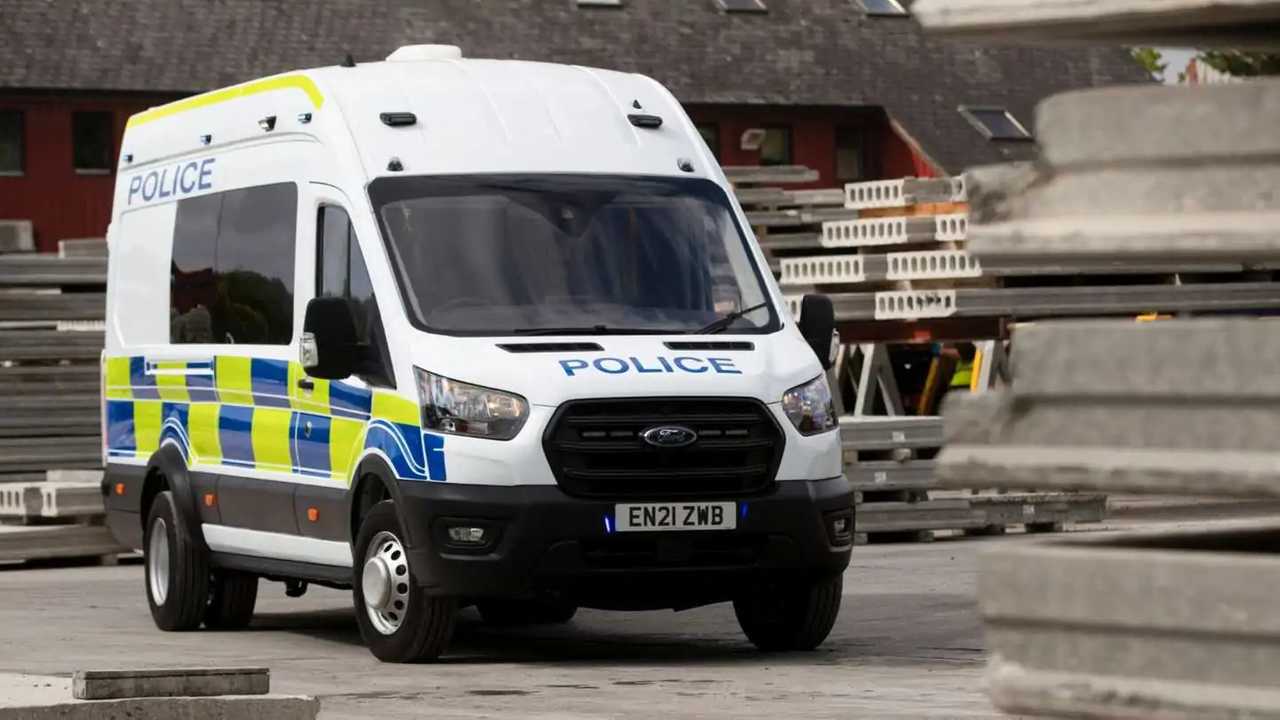
The Transit’s cargo area is designed with practical considerations in mind, featuring a durable load floor that can withstand heavy equipment and tools without damage.
The side panels include integrated tie-down points and optional shelving systems that are engineered to maintain their integrity under load. The rear doors are particularly well-designed, with heavy-duty hinges and effective sealing systems that prevent rattles and leaks even after years of use.
One of the Transit’s key advantages is Ford’s extensive dealer network and parts availability. With dealerships in virtually every market, finding service and parts for the Transit is rarely a problem.
Ford has also invested in training programs for technicians, ensuring that service centers are equipped with the knowledge and tools necessary to maintain these vehicles properly. This infrastructure support significantly reduces downtime and keeps operating costs predictable.
The Transit’s technology integration has been carefully balanced to provide useful features without compromising reliability. The infotainment system is intuitive and responsive, while the available driver assistance features are designed to enhance safety without creating additional maintenance concerns. The diagnostic systems are sophisticated yet accessible, allowing technicians to quickly identify and address any issues that may arise.
From a maintenance perspective, the Transit follows a reasonable service schedule that balances protection with cost-effectiveness. The diesel engines feature extended service intervals, reducing the frequency of routine maintenance while maintaining reliability.
When service is required, the van’s design allows for easy access to key components, reducing labor costs and minimizing the time spent in the shop. The modular design of many components allows for efficient repairs when issues do arise.
The Transit’s versatility contributes to its reliability by allowing operators to configure the van specifically for their intended use. Whether equipped as a cargo van, passenger transport, or specialized work vehicle, the Transit’s adaptability means that it can be optimized for specific applications, reducing stress on components and improving overall reliability.
The extensive range of factory and aftermarket accessories allows for customization without compromising the van’s structural integrity or warranty coverage.
The total cost of ownership for the Transit is competitive, with the van’s improved reliability reducing unexpected repair costs. Insurance costs are typically reasonable due to the van’s good safety record and comprehensive security features.
Fuel economy is competitive for its class, helping to control operating costs over the van’s lifetime. The Transit’s strong resale value helps offset the initial purchase price, making it an attractive option for businesses concerned about long-term costs.
Fleet operators who have experience with both earlier and current Transit models consistently report significant improvements in reliability and overall satisfaction.
The van’s ability to maintain consistent performance over extended periods makes it an ideal choice for businesses that cannot afford unexpected downtime.
Whether used for deliveries, service calls, or as a mobile workshop, the current Transit has proven itself capable of handling diverse commercial applications with minimal issues and maximum productivity.
4. Isuzu NPR (Light Duty)
The Isuzu NPR represents a different approach to commercial vehicle reliability, focusing on simplicity, durability, and ease of maintenance. While technically a light-duty truck rather than a traditional van, the NPR’s cab-over design and versatile chassis make it an excellent choice for businesses requiring a reliable work vehicle.
Isuzu’s reputation for building durable commercial vehicles spans decades, and the NPR continues this tradition with a design philosophy that prioritizes function over form and reliability over complexity.
The heart of the NPR’s reliability lies in its time-tested powertrain combination. The diesel engines used in the NPR are based on proven designs that have been refined over multiple generations.
These engines feature simple, robust construction with minimal electronic complexity, making them inherently reliable and easy to service. The fuel injection systems are straightforward and durable, while the emissions controls are designed to maintain performance without compromising reliability.
The transmission options are equally robust, with both manual and automatic variants engineered to handle the demanding nature of commercial use. The NPR’s chassis design reflects Isuzu’s extensive experience in commercial vehicle manufacturing.
The frame is constructed from high-strength steel with generous safety margins built into all critical components. The suspension system is designed for durability and load-carrying capacity, with heavy-duty springs and shock absorbers that can handle the punishment of daily commercial use.
The steering system is robust and provides excellent feedback, while the braking system is powerful and consistent, providing reliable stopping power even when fully loaded.
Build quality in the NPR is characterized by its straightforward, no-nonsense approach. The cab is constructed from heavy-duty materials with excellent corrosion resistance, while the interior components are designed to withstand years of heavy use.
The electrical system is relatively simple compared to modern vans, but this simplicity contributes to its reliability. Wiring harnesses are well-protected and routed away from potential damage points, while connectors are sealed against moisture and contaminants.
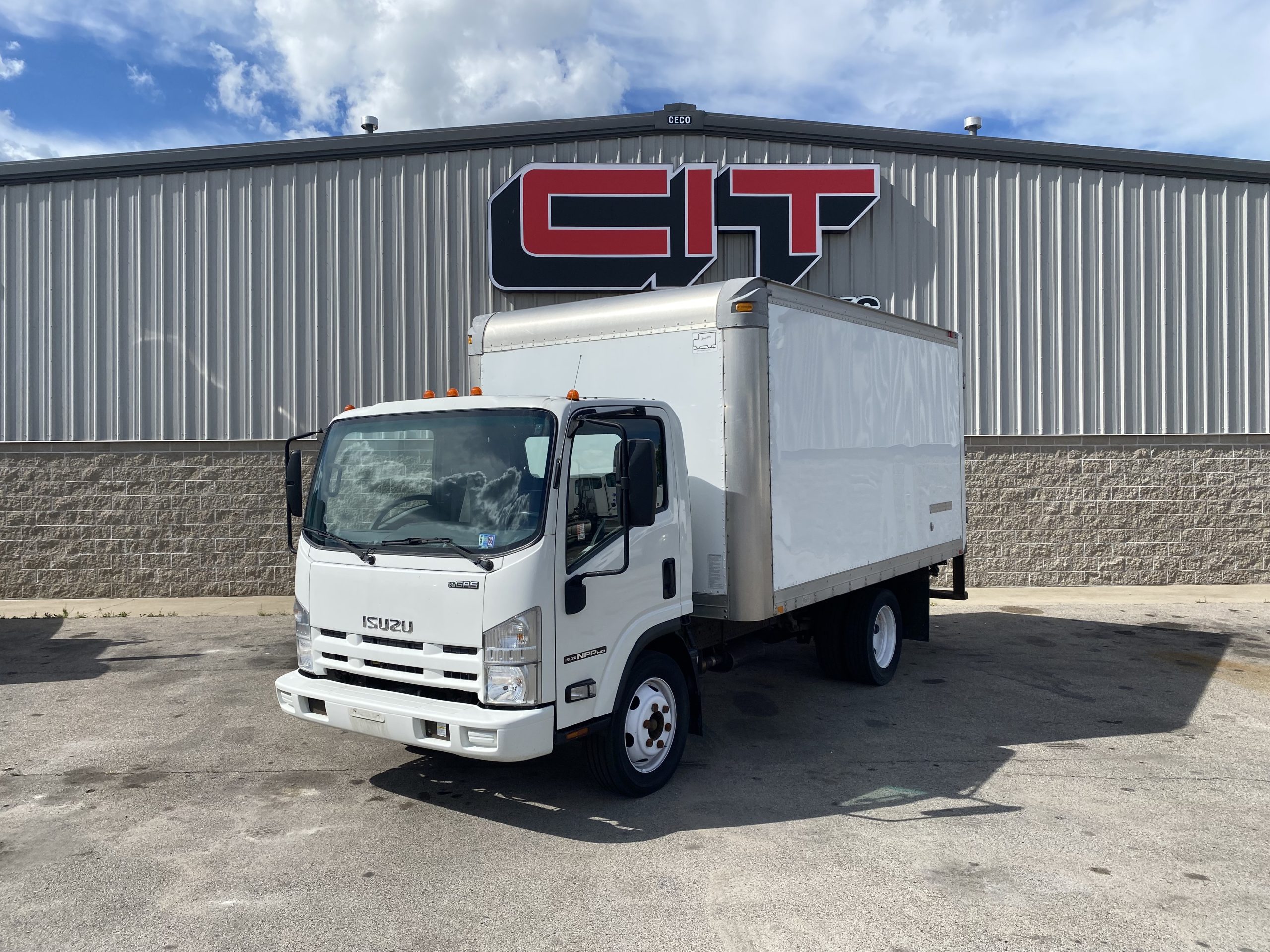
The NPR’s modular design philosophy makes it an excellent choice for businesses with specialized needs. The chassis can accommodate a wide variety of body configurations, from simple cargo boxes to specialized work bodies.
This versatility operators to configure the vehicle specifically for their intended use, reducing stress on components and improving overall reliability. The separation of the cab and cargo area also means that damage to one area doesn’t necessarily affect the other, improving overall durability.
One of the NPR’s greatest strengths is its serviceability. The cab-over design provides excellent access to the engine and transmission, making maintenance and repairs straightforward and efficient.
The diagnostic systems are comprehensive but not overly complex, allowing technicians to identify and address any issues that may arise quickly. Parts availability is excellent, with Isuzu maintaining an extensive network of dealers and service centers equipped to handle NPR maintenance and repairs.
The NPR’s reliability is further enhanced by its conservative approach to technology integration. While it may not have all the latest features found in modern vans, this simplicity contributes to its dependability.
The controls are straightforward and intuitive, while the systems are designed to function reliably under a wide range of conditions. This approach appeals to businesses that prioritize reliability and ease of maintenance over the latest technological features.
From a maintenance perspective, the NPR follows a comprehensive service schedule that is designed to maximize reliability while minimizing costs. The service intervals are reasonable, and the van’s design allows for efficient maintenance procedures.
The straightforward nature of the vehicle’s systems means that maintenance can often be performed by less specialized technicians, reducing labor costs and improving convenience.
The NPR’s safety systems are comprehensive and reliable, featuring robust construction and proven technologies that help protect occupants and cargo.
The braking system is particularly noteworthy, providing consistent stopping power even when fully loaded. The steering and suspension systems are designed to provide stable handling characteristics under all loading conditions.
The total cost of ownership for the NPR is typically lower than many competitors due to its reliability and straightforward maintenance requirements.
While the initial purchase price may be higher than some alternatives, the reduced frequency of repairs and lower maintenance costs quickly offset this difference. Insurance costs are typically reasonable due to the vehicle’s excellent safety record and lower theft rates compared to some other commercial vehicles.
Fleet operators consistently report high satisfaction with the NPR’s reliability and performance. The vehicle’s ability to maintain consistent operation over extended periods makes it an ideal choice for businesses that require dependable transportation.
Whether used for local deliveries, service operations, or specialized applications, the NPR has proven itself capable of handling diverse commercial applications with minimal issues and maximum uptime.
Also Read: 5 High-Mileage Cars Still on the Road and 5 You Never See Past 80k
5. Ram ProMaster (2019 and Later)
The Ram ProMaster has emerged as a surprisingly reliable option in the commercial van market, particularly in its latest iterations. Based on the proven Fiat Ducato platform, the ProMaster has benefited from decades of European commercial vehicle development while incorporating improvements specific to North American market requirements.
The 2019 model year and later versions represent a mature platform that has addressed many of the issues that plagued earlier models, resulting in a work van that offers excellent reliability at a competitive price point.
The ProMaster’s reliability foundation is built upon its time-tested 3.6-liter Pentastar V6 engine, which has been extensively refined and proven in various Chrysler products.
This naturally aspirated engine provides smooth power delivery and excellent durability, with many examples easily surpassing 200,000 miles with proper maintenance.
The engine’s design emphasizes simplicity and reliability, with fewer complex systems than many turbocharged alternatives. The nine-speed automatic transmission has been specifically calibrated for commercial use, providing smooth shifts and excellent fuel economy while maintaining durability under heavy-duty conditions.
The ProMaster’s unibody construction might seem less robust than traditional body-on-frame designs, but it contributes to the van’s reliability and efficiency.
The structure is engineered to distribute loads evenly throughout the frame, reducing stress concentrations that can lead to fatigue failures. The lower step-in height and flat load floor that result from this design not only improve usability but also reduce the mechanical stress on components during loading and unloading operations.
Build quality in the ProMaster has improved significantly with recent model years, with better materials and improved assembly processes contributing to enhanced reliability.
The body panels are manufactured to tighter tolerances with improved corrosion resistance, while the interior components are designed to withstand the rigors of daily commercial use. The electrical system has been redesigned with improved wiring harnesses, better connectors, and enhanced protection against moisture and contamination.
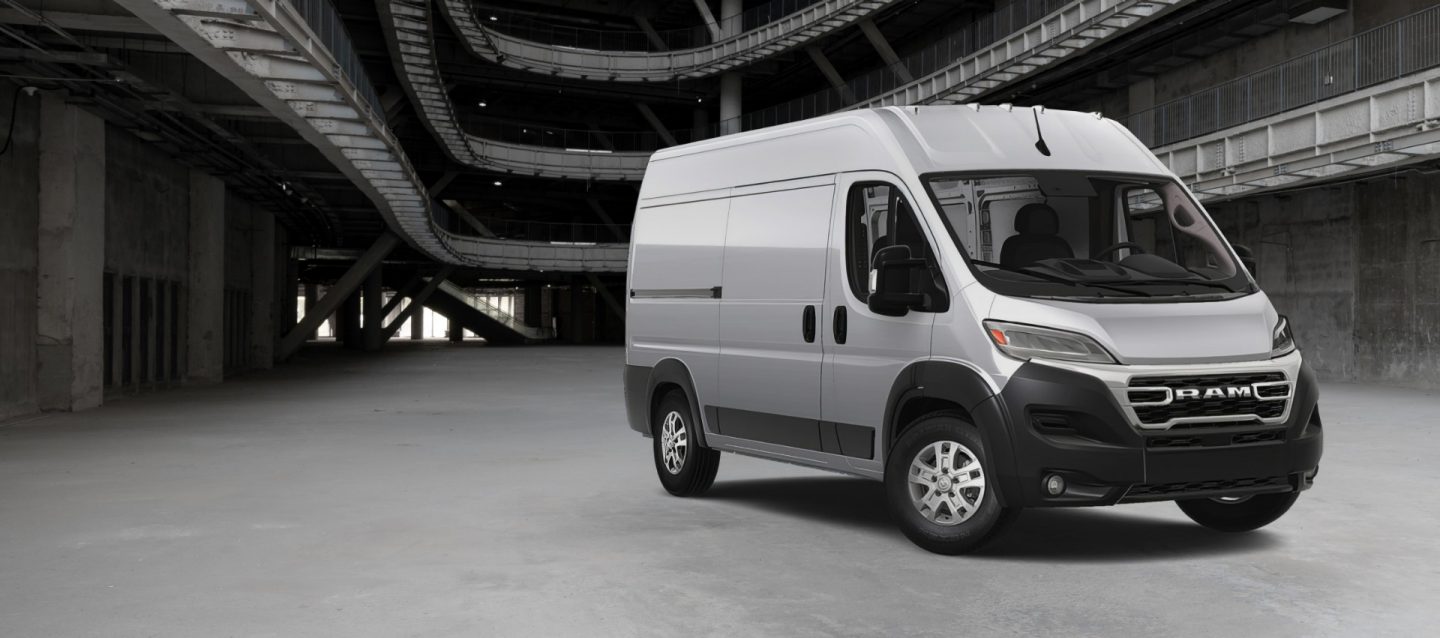
The ProMaster’s cargo area is designed with practical considerations in mind, featuring a completely flat load floor that maximizes cargo capacity and ease of use.
The side panels include integrated tie-down points and optional shelving systems that are engineered to maintain their integrity under load. The rear doors are particularly well-designed, with heavy-duty hinges and effective sealing systems that prevent rattles and leaks even after years of use. The side and rear door openings are among the largest in the class, improving accessibility and reducing the physical stress on operators.
One of the ProMaster’s key advantages is its competitive pricing combined with improved reliability. Ram has invested heavily in improving the van’s dependability while maintaining its cost advantage over premium competitors.
The extensive dealer network provides good parts availability and service support, though it may not be as comprehensive as some competitors. The diagnostic systems are sophisticated yet accessible, allowing technicians to quickly identify and address any issues that may arise.
The ProMaster’s technology integration has been carefully balanced to provide useful features without compromising reliability. The infotainment system is intuitive and responsive, while the available driver assistance features are designed to enhance safety without creating additional maintenance concerns.
The climate control system is robust and effective, providing consistent performance even in extreme conditions. From a maintenance perspective, the ProMaster follows a reasonable service schedule that balances protection with cost-effectiveness.
The V6 engine features extended service intervals, reducing the frequency of routine maintenance while maintaining reliability. When service is required, the van’s design allows for reasonable access to key components, though not as easy as some competitors. The modular design of many components allows for efficient repairs when issues do arise.
The ProMaster’s versatility contributes to its reliability by allowing operators to configure the van specifically for their intended use. Whether equipped as a cargo van, passenger transport, or specialized work vehicle, the ProMaster’s adaptability means that it can be optimized for specific applications, reducing stress on components and improving overall reliability.
The extensive range of factory and aftermarket accessories allows for customization without compromising the van’s structural integrity or warranty coverage.
The total cost of ownership for the ProMaster is particularly attractive, with the van’s competitive purchase price and improving reliability creating excellent value. Insurance costs are typically reasonable due to the van’s good safety record and comprehensive security features.
Fuel economy is competitive for its class, helping to control operating costs over the van’s lifetime. The ProMaster’s resale value has been improving as its reliability reputation strengthens.
Fleet operators who have experience with recent ProMaster models report significant improvements in reliability and overall satisfaction compared to earlier versions.
The van’s ability to maintain consistent performance over extended periods makes it an increasingly attractive choice for businesses that cannot afford unexpected downtime. Whether used for deliveries, service calls, or as a mobile workshop, the current ProMaster has proven itself capable of handling diverse commercial applications with minimal issues and improving productivity.
5 Things That Always Break Down on Site
These problematic commercial vehicles demonstrate recurring mechanical failures that cause catastrophic breakdowns during critical work operations, stranding contractors and costing businesses thousands in lost productivity and emergency repairs.
Their compromised engineering includes components prone to premature failure under commercial loads, creating ongoing reliability nightmares that frustrate owners and jeopardize project deadlines.
From transmission failures that occur during heavy hauling to electrical systems that shut down while powering essential tools, these unreliable work vans generate extensive breakdown documentation and costly emergency service calls.
Contractors frequently report missed deadlines and client dissatisfaction with these maintenance-intensive machines a reflection of design compromises and inadequate testing that prioritize initial purchase price over long-term commercial durability.
These vehicles often feature components that were never properly tested under actual commercial working conditions, creating cascading system failures that require extensive repairs and prolonged downtime.
The manufacturers may have utilized consumer-grade components or inadequate commercial specifications that compromise critical systems when subjected to real-world work demands.
Their breakdown records reveal frustrated business owners dealing with repeated failures during important jobs, emergency towing from job sites, and damaged professional reputations.
This pattern of unreliability results in lost contracts and damaged business relationships among contractors seeking dependable commercial transportation.
1. Nissan NV200 (2013-2020)
The Nissan NV200 represents one of the most disappointing entries in the commercial van market, with a track record of reliability issues that have made it a nightmare for many business owners. Initially positioned as an affordable alternative to European competitors, the NV200 quickly gained a reputation for frequent breakdowns and costly repairs that far exceeded any initial savings.
The van’s problems are so well-documented that many fleet managers actively avoid it, despite its attractive initial price point and compact dimensions.
The core of the NV200’s reliability problems lies in its powertrain, particularly the continuously variable transmission (CVT) that Nissan employed in many models.
This CVT system, while providing smooth operation when functioning properly, has proven to be extremely problematic in commercial applications. The transmission is known for premature failure, often requiring complete replacement at relatively low mileages.
Many owners report CVT failures occurring between 60,000 and 100,000 miles, well before the expected service life of a commercial vehicle. The cost of CVT replacement often exceeds the value of the van, making it an economic total loss for many operators.
The NV200’s 2.0-liter four-cylinder engine, while adequate for light-duty applications, has demonstrated numerous reliability issues in commercial use. The engine is known for excessive oil consumption, requiring frequent top-ups between service intervals. Carbon buildup in the intake system is a common problem, leading to reduced performance and increased emissions.
The engine’s timing chain system has shown premature wear, resulting in costly repairs that can sideline the van for extended periods. Additionally, the engine’s cooling system has proven inadequate for sustained commercial use, leading to overheating issues in demanding applications.
Build quality issues plague the NV200 throughout its construction. The body panels are thin and prone to corrosion, particularly around the rear doors and wheel wells. The paint quality is poor, with many vehicles showing premature fading and peeling. The interior components are cheaply made and wear quickly under commercial use.
Seats lose their support rapidly, controls become sticky or fail, and the dashboard develops cracks and other damage. The electrical system is particularly problematic, with numerous reports of wiring harness failures, connector corrosion, and intermittent electrical problems that are difficult to diagnose and repair.
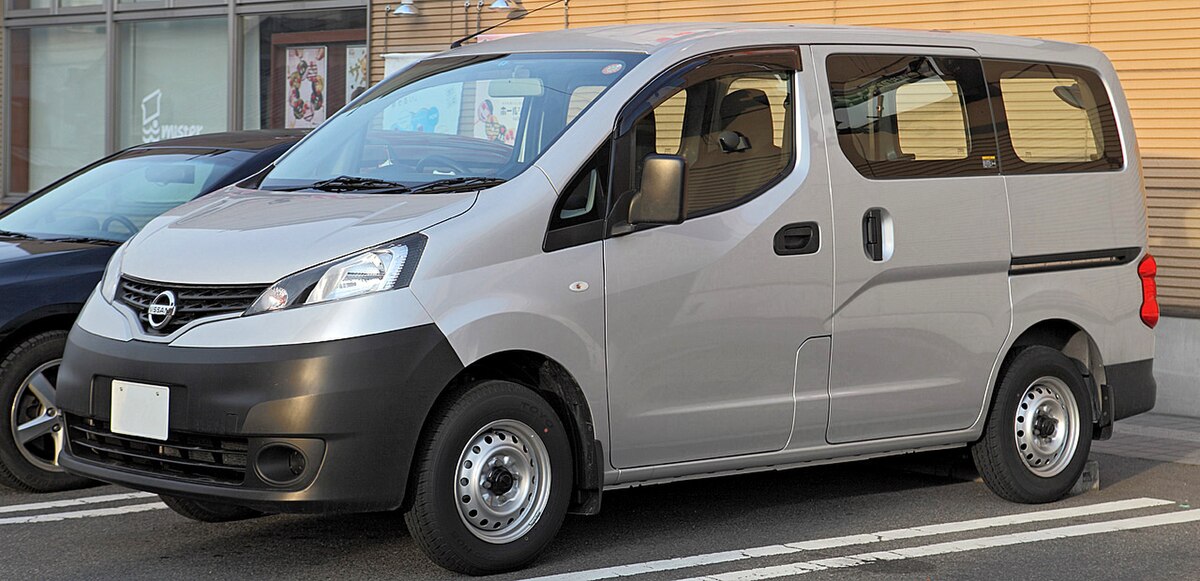
The NV200’s suspension system is inadequate for commercial use, with components wearing out prematurely and providing poor ride quality. The front struts are known to fail early, while the rear suspension components often require replacement before 100,000 miles.
The steering system is vague and imprecise, making the van difficult to control when loaded. The braking system, while adequate for stopping, suffers from premature wear and inconsistent performance.
Parts availability for the NV200 can be problematic, with many components being expensive and difficult to source. The van’s poor reputation has led to reduced production and limited aftermarket support, making repairs more expensive and time-consuming.
Diagnostic equipment specific to the NV200 is not widely available, making troubleshooting difficult for independent repair shops. The complexity of some systems, particularly the CVT transmission, requires specialized knowledge and tools that many shops don’t possess.
The NV200’s cargo area, while spacious for its size, suffers from build quality issues that affect its reliability. The rear doors are prone to sagging and misalignment, leading to water leaks and difficulty in operation.
The side panels are thin and easily damaged, while the load floor is insufficiently reinforced for heavy-duty use. The tie-down points are poorly designed and often fail under load, creating safety hazards and cargo damage.
From a maintenance perspective, the NV200 requires frequent attention to prevent major failures. The CVT transmission requires special fluid and careful maintenance procedures, but even with proper care, failures are common.
The engine requires frequent oil changes and monitoring to prevent damage from oil consumption issues. The electrical system requires regular inspection and cleaning to prevent corrosion-related failures. Even with diligent maintenance, many issues are inevitable due to fundamental design flaws.
The total cost of ownership for the NV200 is significantly higher than expected due to its reliability problems. While the initial purchase price is attractive, the frequent repairs and premature major component failures quickly erode any savings.
Insurance costs can be higher due to the van’s poor safety record and high claim frequency. Fuel economy, while reasonable, is often compromised by the various mechanical issues that plague the van.
Fleet operators who have experience with the NV200 consistently report high levels of dissatisfaction and regret over their purchase decisions. The van’s inability to maintain consistent operation makes it unsuitable for businesses that require dependable transportation.
Many operators have found themselves replacing NV200s well before their expected service life, resulting in significant financial losses. The van’s poor reputation has also led to extremely poor resale values, making it difficult to recover any of the initial investment.
2. Ford Transit (2015-2019)
The Ford Transit from the 2015-2019 model years represents a particularly troublesome period in the van’s development, with numerous reliability issues that have given the entire Transit line a poor reputation among many commercial users.
While Ford has made significant improvements in recent years, the earlier models continue to plague the used van market with their well-documented problems. These issues were so severe that they prompted Ford to make substantial changes to the design and manufacturing processes, but the damage to the Transit’s reputation was already done.
The most notorious problem with the early Transit models is the transmission failure epidemic that affected thousands of vehicles. The six-speed automatic transmission used in these models was prone to premature failure, often requiring complete replacement at relatively low mileages.
The transmission problems manifested as harsh shifting, slipping, and complete failure, often without warning. Many owners reported transmission failures occurring between 50,000 and 80,000 miles, well before the expected service life of a commercial vehicle. The cost of transmission replacement often exceeded half the value of the van, making it an economic disaster for many operators.
The engine problems in early Transit models were equally troublesome, with the 3.7-liter V6 engine showing numerous reliability issues. The engine was known for excessive oil consumption, requiring frequent top-ups between service intervals.
The timing chain system showed premature wear, resulting in costly repairs that could sideline the van for extended periods. The engine’s cooling system was inadequate for sustained commercial use, leading to overheating issues in demanding applications. Additionally, the fuel system components were prone to failure, causing performance issues and emissions problems.
Build quality issues were apparent throughout the early Transit’s construction. The body panels were prone to corrosion, particularly around the rear doors and wheel wells. The paint quality was inconsistent, with many vehicles showing premature fading and peeling.
The interior components were cheaply made and wore quickly under commercial use. The electrical system was particularly problematic, with numerous reports of wiring harness failures, connector corrosion, and intermittent electrical problems that were difficult to diagnose and repair.
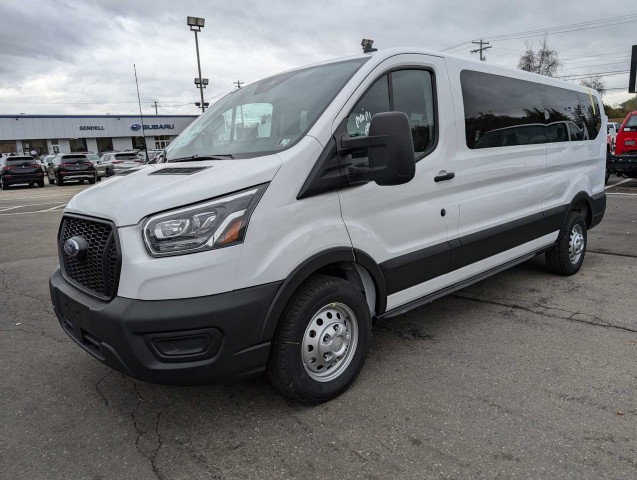
The Transit’s suspension system in these model years was inadequate for commercial use, with components wearing out prematurely and providing poor ride quality.
The front struts were known to fail early, while the rear suspension components often required replacement before 100,000 miles. The steering system was vague and imprecise, making the van difficult to control when loaded. The braking system suffered from premature wear and inconsistent performance, creating safety concerns.
Parts availability for the early Transit models became problematic as Ford worked to address the numerous issues. Many components were backordered for extended periods, leaving vans stranded in repair shops.
The diagnostic equipment required to properly service these vans was not widely available at launch, making troubleshooting difficult for independent repair shops. The complexity of some systems required specialized knowledge and tools that many shops didn’t possess.
The Transit’s cargo area, while spacious, suffered from build quality issues that affected its reliability. The rear doors were prone to sagging and misalignment, leading to water leaks and difficulty in operation.
The side panels were thin and easily damaged, while the load floor was insufficiently reinforced for heavy-duty use. The tie-down points were poorly designed and often failed under load, creating safety hazards and cargo damage.
From a maintenance perspective, the early Transit required frequent attention to prevent major failures. The transmission required special fluid and careful maintenance procedures, but even with proper care, failures were common. The engine required frequent oil changes and monitoring to prevent damage from oil consumption issues.
The electrical system required regular inspection and cleaning to prevent corrosion-related failures. Even with diligent maintenance, many issues were inevitable due to fundamental design flaws.
The total cost of ownership for the early Transit was significantly higher than expected due to its reliability problems. While the initial purchase price was competitive, the frequent repairs and premature major component failures quickly eroded any savings.
Insurance costs were higher due to the van’s poor safety record and high claim frequency. Fuel economy was often compromised by the various mechanical issues that plagued the van.
Fleet operators who purchased early Transit models consistently report high levels of dissatisfaction and regret over their purchase decisions. The van’s inability to maintain consistent operation made it unsuitable for businesses that required dependable transportation.
Many operators found themselves replacing early Transits well before their expected service life, resulting in significant financial losses. The van’s poor reputation during this period also led to extremely poor resale values, making it difficult to recover any of the initial investment.
The early Transits’ problems were so severe that they prompted class-action lawsuits and extended warranty coverage from Ford. While the company has made significant improvements in recent years, the legacy of these problematic models continues to impact the Transit’s reputation in the used van market. Many potential buyers remain skeptical of the Transit brand due to the well-documented problems of the 2015-2019 model years.
3. Ram ProMaster (2014-2018)
The Ram ProMaster from 2014-2018 represents a cautionary tale of how not to introduce a commercial vehicle to a new market. Based on the Fiat Ducato platform, the early ProMaster suffered from numerous reliability issues that stemmed from poor quality control, inadequate testing for North American conditions, and a lack of proper dealer support.
While the ProMaster has improved significantly in recent years, the early models continue to plague the used van market with their well-documented problems and poor reputation among commercial users.
The most significant problem with the early ProMaster was its problematic electrical system, which was prone to numerous failures that could leave the van completely inoperable.
The main wiring harness was inadequately protected against moisture and road salt, resulting in corrosion and intermittent electrical issues. The body control module was particularly troublesome, with many units failing prematurely and requiring expensive replacement. The electrical problems were often intermittent and difficult to diagnose, leading to extended downtime and frustrated owners.
The ProMaster’s 3.6-liter Pentastar V6 engine, while generally reliable in other applications, showed numerous issues in the early ProMaster installations. The engine was known for excessive oil consumption, requiring frequent top-ups between service intervals.
The cooling system was inadequate for sustained commercial use, leading to overheating issues in demanding applications. Additionally, the engine’s intake manifold was prone to carbon buildup, causing performance issues and increased emissions.
Build quality issues were apparent throughout the early ProMaster’s construction. The body panels were prone to corrosion, particularly around the rear doors and wheel wells. The paint quality was poor, with many vehicles showing premature fading and peeling.
The interior components were cheaply made and wore quickly under commercial use. Seats lost their support rapidly, controls became sticky or failed entirely, and the dashboard developed cracks and other damage. The door handles were particularly problematic, with many breaking off entirely during normal use.

The early ProMaster’s transmission problems were less severe than some competitors’ but still significant enough to cause concern. The nine-speed automatic transmission was prone to rough shifting and premature wear, particularly in stop-and-go commercial applications.
The transmission control module was also problematic, with many units requiring reprogramming or replacement. The clutch system in manual transmission models was inadequate for commercial use, with premature wear and failure being common complaints.
The ProMaster’s suspension system in these model years was inadequately designed for North American road conditions. The front struts were known to fail early, while the rear suspension components often required replacement before 100,000 miles.
The steering system was vague and imprecise, making the van difficult to control when loaded. The braking system suffered from premature wear and inconsistent performance, creating safety concerns for commercial operators.
Parts availability for the early ProMaster was a significant issue, with many components being expensive and difficult to source. The van’s reliance on European suppliers meant that parts often had to be imported, leading to extended repair times and higher costs.
The diagnostic equipment required to properly service these vans was not widely available at launch, making troubleshooting difficult for independent repair shops. Many technicians were unfamiliar with the Fiat-based systems, leading to misdiagnosis and repeated repairs.
The ProMaster’s cargo area, while spacious and well-designed in theory, suffered from build quality issues that affected its reliability. The rear doors were prone to sagging and misalignment, leading to water leaks and difficulty in operation.
The side panels were thin and easily damaged, while the load floor showed premature wear under heavy use. The tie-down points were poorly designed and often failed under load, creating safety hazards and cargo damage.
From a maintenance perspective, the early ProMaster required frequent attention to prevent major failures. The electrical system required regular inspection and cleaning to prevent corrosion-related failures.
The engine required frequent oil changes and monitoring to prevent damage from oil consumption issues. The transmission required special fluid and careful maintenance procedures to prevent premature wear. Even with diligent maintenance, many issues were inevitable due to fundamental design flaws and poor quality control.
The total cost of ownership for the early ProMaster was significantly higher than expected due to its reliability problems. While the initial purchase price was attractive, the frequent repairs and premature component failures quickly eroded any savings.
Insurance costs were higher due to the van’s poor safety record and high claim frequency. Fuel economy was often compromised by the various mechanical issues that plagued the van.
Fleet operators who purchased early ProMaster models consistently report high levels of dissatisfaction and regret over their purchase decisions. The van’s inability to maintain consistent operation made it unsuitable for businesses that required dependable transportation.
Many operators found themselves replacing early ProMasters well before their expected service life, resulting in significant financial losses. The van’s poor reputation during this period also led to extremely poor resale values, making it difficult to recover any of the initial investment.
4. Chevrolet Express (2010-2019)
The Chevrolet Express from 2010-2019 represents a particularly troublesome period for this long-running commercial van series. While the Express had previously enjoyed a reasonable reputation for durability, the models from this era suffered from numerous reliability issues that made them unsuitable for demanding commercial applications.
The problems were so severe that many fleet managers began actively avoiding the Express, despite its competitive pricing and widespread availability.
The most significant problem with the Express from this era was its problematic engine lineup, particularly the 6.0-liter V8 that was prone to numerous failures.
The engine was known for excessive oil consumption, requiring frequent top-ups between service intervals. The Active Fuel Management (AFM) system, designed to improve fuel economy, was particularly troublesome and often failed catastrophically.
When the AFM system failed, it could cause complete engine failure, requiring expensive rebuilds or replacement. The engine’s timing chain system also showed premature wear, resulting in costly repairs that could sideline the van for extended periods.
The Express’s transmission problems were equally severe, with the six-speed automatic transmission showing numerous reliability issues. The transmission was prone to premature failure, often requiring complete replacement at relatively low mileages.
The transmission problems manifested as harsh shifting, slipping, and complete failure, often without warning. Many owners reported transmission failures occurring between 60,000 and 100,000 miles, well before the expected service life of a commercial vehicle. The cost of transmission replacement often exceeded half the value of the van, making it an economic disaster for many operators.
Build quality issues were apparent throughout the Express’s construction during this period. The body panels were prone to corrosion, particularly around the rear doors and wheel wells. The paint quality was inconsistent, with many vehicles showing premature fading and peeling. The interior components were cheaply made and wore quickly under commercial use.
The electrical system was particularly problematic, with numerous reports of wiring harness failures, connector corrosion, and intermittent electrical problems that were difficult to diagnose and repair.
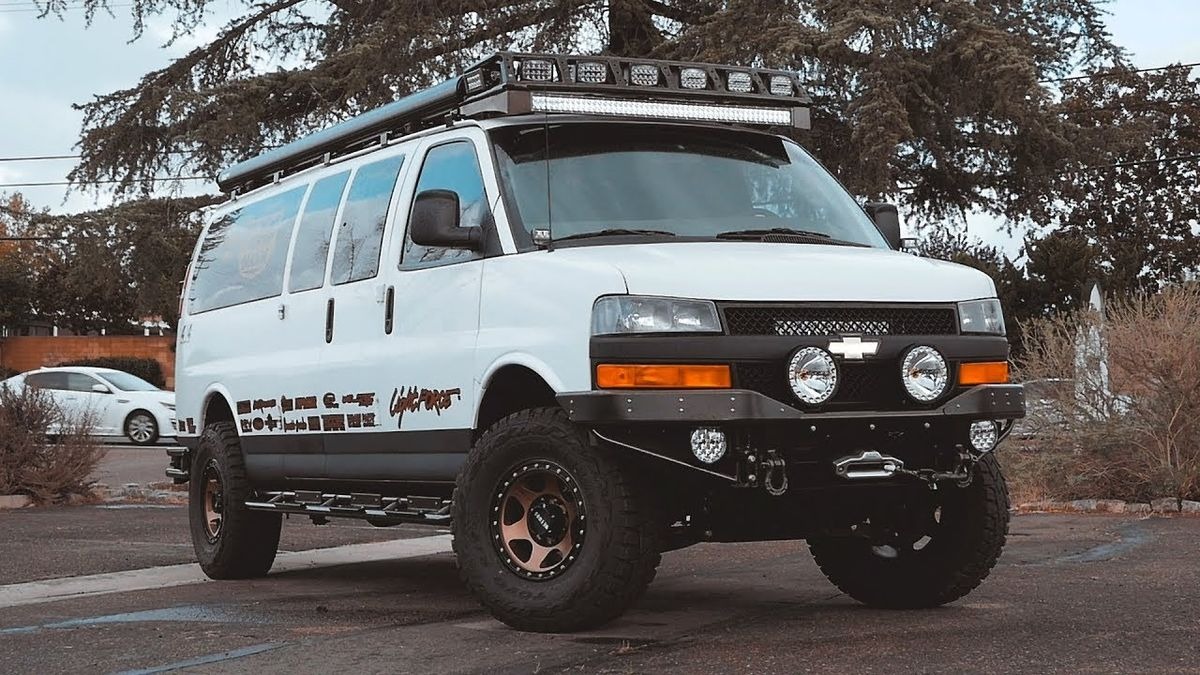
The Express’s suspension system was inadequate for commercial use, with components wearing out prematurely and providing poor ride quality. The front suspension components were known to fail early, while the rear leaf springs often sagged or broke under load.
The steering system was vague and imprecise, making the van difficult to control when loaded. The braking system suffered from premature wear and inconsistent performance, creating safety concerns for commercial operators.
The Express’s fuel system was another source of reliability problems, with the fuel pump frequently failing prematurely. The fuel lines were prone to corrosion and leakage, creating safety hazards and performance issues.
The emissions control system was particularly problematic, with numerous components failing and requiring expensive replacement. The catalytic converter was especially prone to failure, often requiring replacement multiple times during the van’s service life.
Fleet operators who purchased Express models from this era consistently report high levels of dissatisfaction and regret over their purchase decisions. The van’s inability to maintain consistent operation made it unsuitable for businesses that required dependable transportation.
Many operators found themselves replacing Express vans well before their expected service life, resulting in significant financial losses. The van’s poor reputation during this period also led to poor resale values, making it difficult to recover any of the initial investment.
5. Mercedes-Benz Metris (2016-2023)
The Mercedes-Benz Metris represents one of the most disappointing commercial vehicles ever produced by the German luxury manufacturer. Despite carrying the prestigious Mercedes-Benz badge and commanding a premium price, the Metris has proven to be a reliability nightmare that has damaged the brand’s reputation in the commercial vehicle market.
The van’s problems are so severe and widespread that many fleet managers actively avoid it, despite its attractive size and theoretical capabilities.
The core of the Metris’s reliability problems lies in its turbocharged 2.0-liter four-cylinder engine, which has proven to be woefully inadequate for commercial use. The engine is prone to turbocharger failure, often requiring expensive replacement at relatively low mileages.
The turbocharger problems are exacerbated by the engine’s inadequate cooling system, which cannot handle the heat generated during sustained commercial use. The engine is also known for excessive oil consumption, requiring frequent top-ups between service intervals. Carbon buildup in the intake system is a common problem, leading to reduced performance and increased emissions.
The Metris’s transmission problems are equally severe, with the seven-speed automatic transmission showing numerous reliability issues. The transmission is prone to premature failure, often requiring complete replacement at relatively low mileages. The transmission problems manifest as harsh shifting, slipping, and complete failure, often without warning.
Many owners report transmission failures occurring between 50,000 and 80,000 miles, well before the expected service life of a commercial vehicle. The cost of transmission replacement often exceeds the value of the van, making it an economic total loss for many operators.
Build quality issues plague the Metris throughout its construction, which is surprising given Mercedes-Benz’s reputation for quality. The body panels are thin and prone to corrosion, particularly around the rear doors and wheel wells. The paint quality is poor, with many vehicles showing premature fading and peeling. The interior components are cheaply made and wear quickly under commercial use.
The electrical system is particularly problematic, with numerous reports of wiring harness failures, connector corrosion, and intermittent electrical problems that are difficult to diagnose and repair.
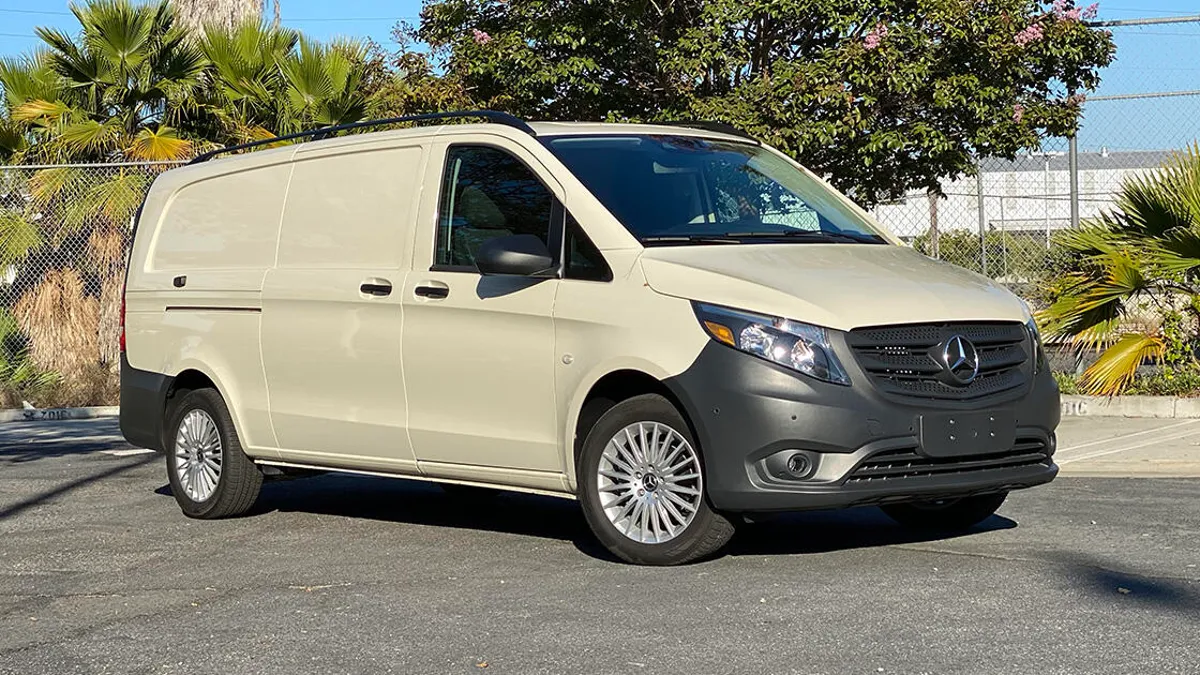
The Metris’s suspension system is inadequate for commercial use, with components wearing out prematurely and providing poor ride quality. The front struts are known to fail early, while the rear suspension components often require replacement before 100,000 miles.
The steering system is vague and imprecise, making the van difficult to control when loaded. The braking system suffers from premature wear and inconsistent performance, creating safety concerns for commercial operators.
Parts availability for the Metris is a significant problem, with many components being extremely expensive and difficult to source. The van’s complex European-designed systems require specialized parts that are often backordered for extended periods.
The diagnostic equipment required to properly service these vans is not widely available, making troubleshooting difficult for independent repair shops. The complexity of the systems requires specialized knowledge and tools that many shops don’t possess, leading to higher repair costs and extended downtime.
The Metris’s problems have been so severe that Mercedes-Benz discontinued the model in 2023, effectively admitting that the van was a failure. The discontinuation has made parts availability even more problematic, as the company has reduced its commitment to supporting existing vehicles.
This has left many Metris owners stranded with vehicles that are difficult and expensive to repair, further damaging the brand’s reputation in the commercial vehicle market.
Also Read: 5 Cars With Dealer Service Records Only for Oil and 5 With Constant Repairs

